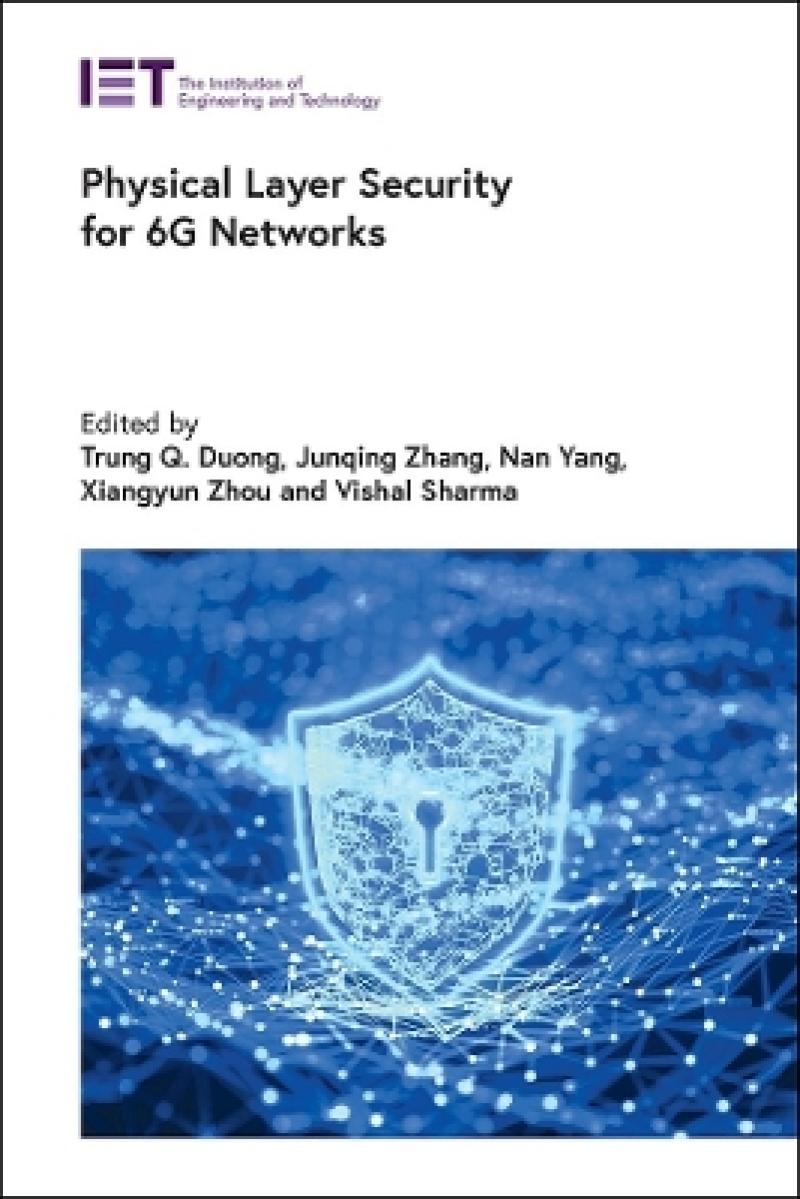6G networks are expected to provide one-microsecond latency communication with a billion devices competing for resources 1000 times faster than current standards. Increases in network speed, heterogeneity, virtualization, better radio requirements and adaptive communications will place new demands on physical layer security. Moreover, IoT, blockchain, and artificial intelligence are enabling technologies that require rapid data rates, raising a significant burden on the network's physical layer, requiring that security must be attained at a fast pace, and that the network must be resilient to accommodate sudden changes to the configurations or the load.
Physical layer (PHY) security solutions are needed that have the capacity to handle the new demands of 6G networks, whilst protecting those networks against risk factors such as interference, data spoofing, replay attacks, side-channel attacks, jamming, traffic analysis, and cyber-vandalism attacks. This comprehensive book addresses the PHY security challenges and proposes efficient and resilient physical layer security solutions for beyond 5G networks leading to 6G. Several topics have emerged that rely on PHY security in solving real-world network challenges such as ultra-dense networks, adaptive communication, distributed technology, and artificial intelligence.
Physical Layer Security for 6G Networks helps readers understand the expectations of 6G's physical layer security in supporting pervasive and integrated communication networks, AI convergence and utility, and develop better sensing solutions, which go beyond cognitive radio, device-to-device or mm-wave communications.
Addressing the physical layer security challenges and proposing efficient and resilient physical layer security solutions for beyond 5G networks leading to 6G, this book will help readers better understand the expectations of 6G's physical layer security in supporting a range of communications and sensing technologies.
- Part I: Fundamental theories of physical layer security
- Chapter 1: Learned codes for dependent wiretap channels
- Chapter 2: Physical layer security in the terahertz band
- Chapter 3: Eavesdropping attacks for terahertz wireless links
- Chapter 4: Intelligent reflecting surface-aided physical layer security of wireless communications
- Part II: Authentication using channel features and hardware impairments
- Chapter 5: Intelligent physical layer authentication
- Chapter 6: Deep learning-enhanced radio frequency fingerprint identification
- Chapter 7: Radio frequency fingerprint-based wireless device identification
- Part III: Key generation from wireless channels
- Chapter 8: Secret key generation from wireless channels
- Chapter 9: Impact of reconfigurable intelligent surfaces on physical layer key generation in NextG wireless networks
- Chapter 10: Physical layer key generation for LoRa-enabled networks
- Chapter 11: Robust secret key generation from stochastic fading in the presence of passive and active attackers
- Chapter 12: Physical-layer key generation for multi-user massive MIMO wireless communications
- Part IV: Applications of physical layer security
- Chapter 13: Physical layer security for UAV wireless networks
- Chapter 14: Secure communication in mobile edge computing networks with RF energy harvesting
- Chapter 15: Secure and private localization in 6G networks
- Chapter 16: Radio frequency informed physical layer security - an augmented padlock to wireless transmission secrecy
- Chapter 17: Physical layer security for non-orthogonal multiple access toward 6G
- Chapter 18: Detecting unpredictable adversaries in the industrial network with blockchain
- Chapter 19: Using support vector machines for detecting active spoofing attacks
